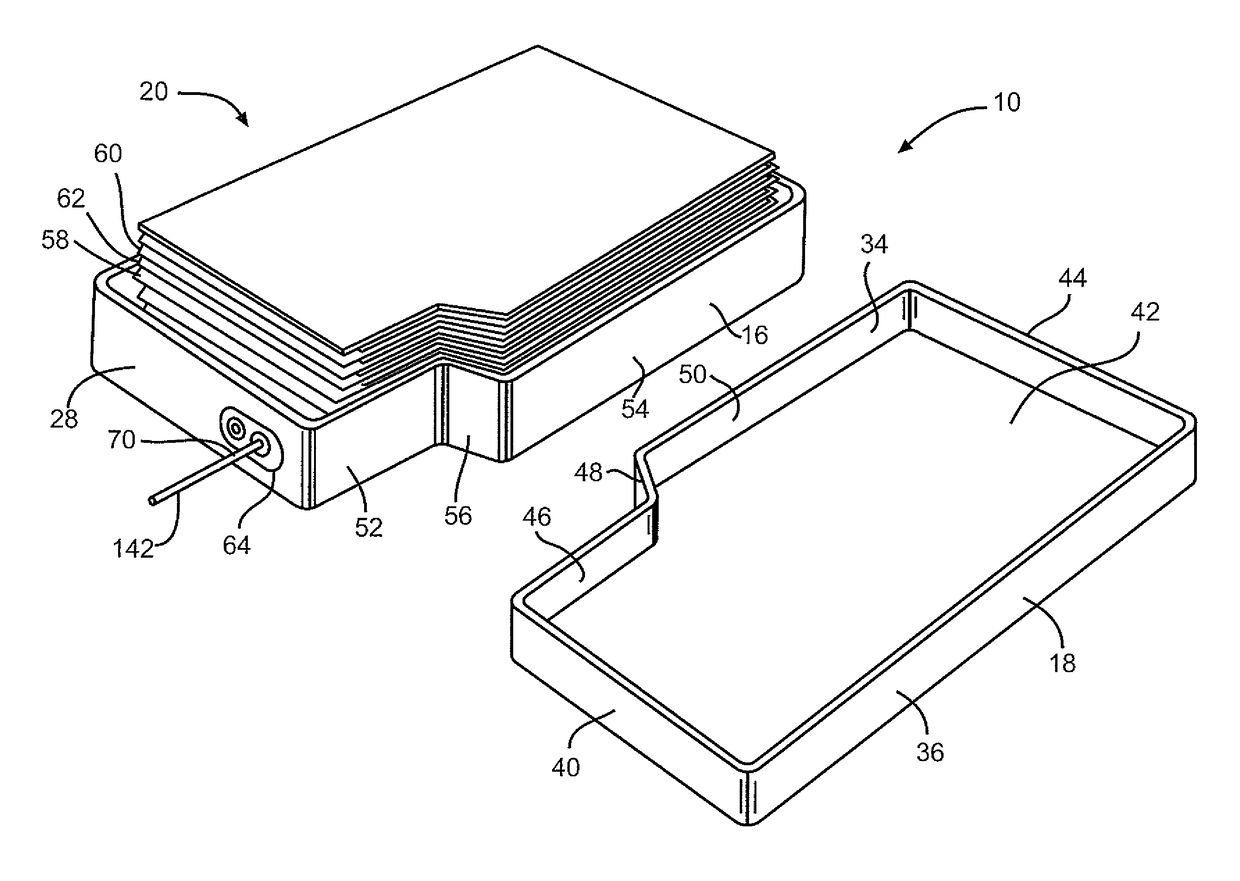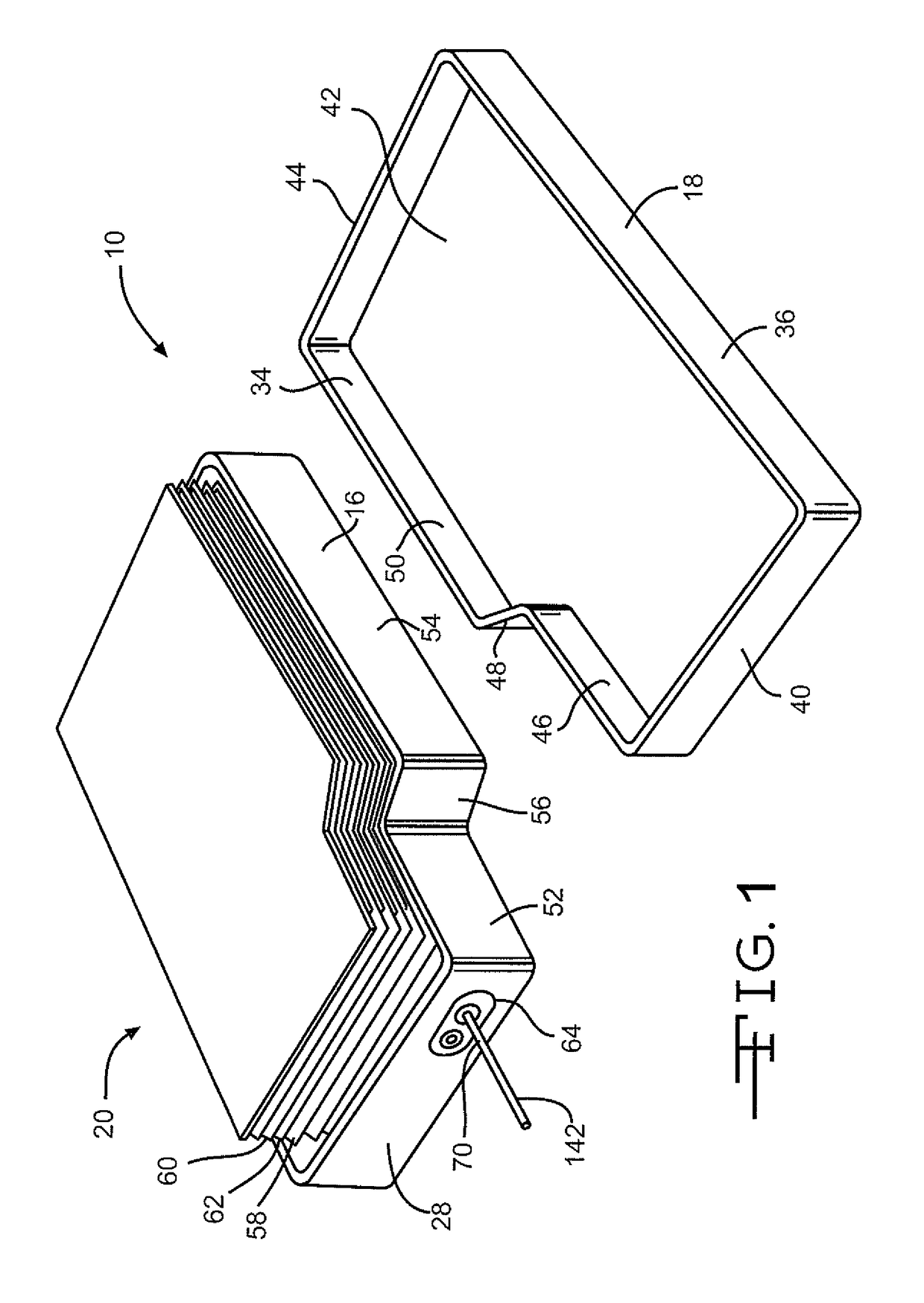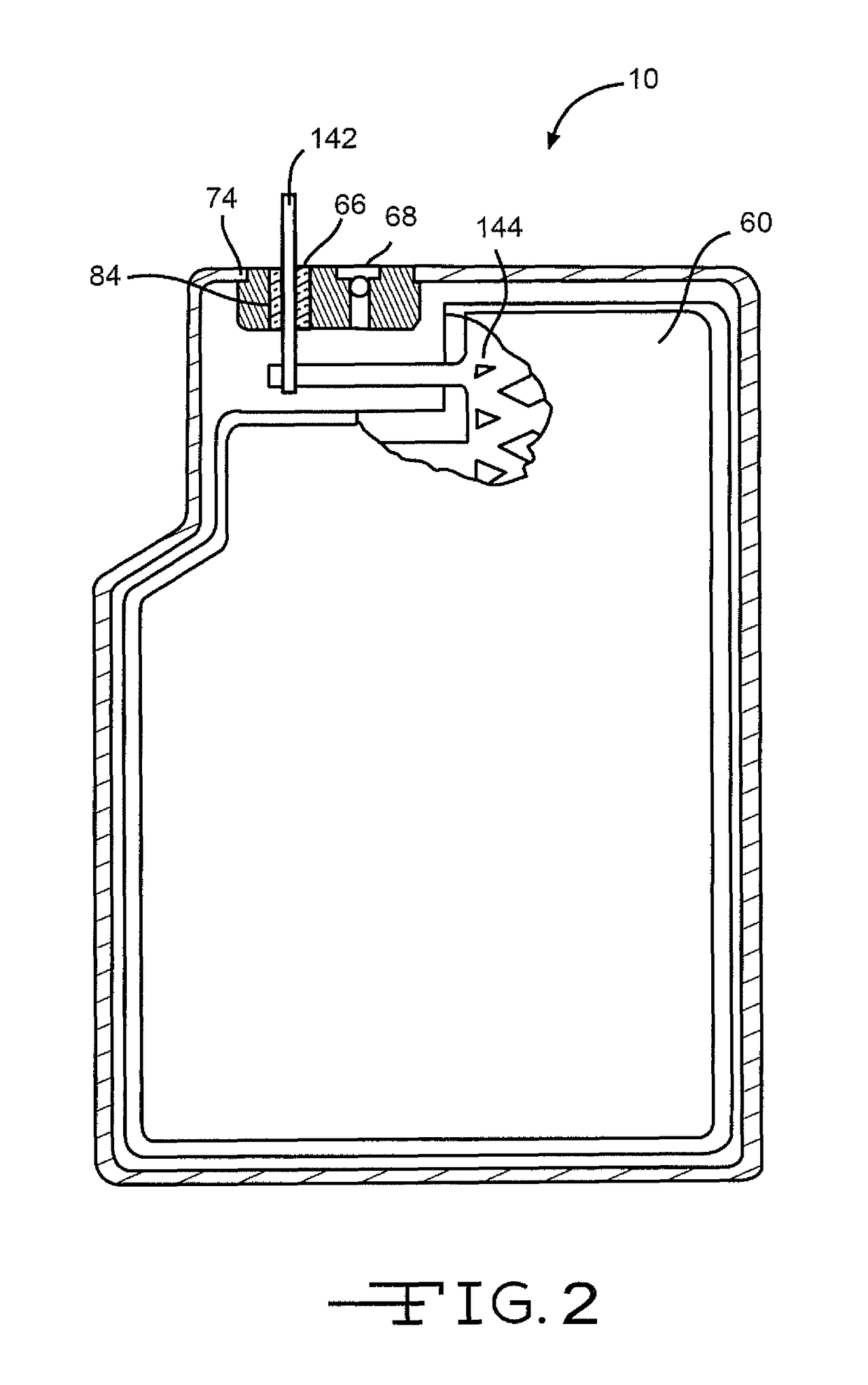Dual weld plug for an electrochemical cell
a technology of electrochemical cells and fill covers, which is applied in the direction of cell components, batteries, conductors, etc., can solve the problems of compromising the robustness of the hermetic seal, insufficient to prevent potential leakage of electrolyte, and inconvenient to use, so as to reduce the diameter, reduce the effect of localized heating and increasing the opening depth
- Summary
- Abstract
- Description
- Claims
- Application Information
AI Technical Summary
Benefits of technology
Problems solved by technology
Method used
Image
Examples
Embodiment Construction
[0031]Turning now to the drawings, FIGS. 1-3 illustrate an embodiment of an electrochemical cell 10 having a header assembly 12 according to the present invention. The header assembly 12, which will be described in detail hereinafter, may comprise a one-piece construction or, alternatively be constructed of a multiple piece subassembly. First, the cell 10 includes a conductive casing of metal 14, such as stainless steel or titanium, having first and second clamshell portions 16 and 18. As shown in FIG. 3, the clamshell portions 16 and 18 are mated together and sealed about their periphery to provide a hermetic enclosure for an electrode assembly 20. The preferred methods of sealing are welding and brazing.
[0032]In particular as shown in FIG. 4, the first clamshell 16 comprises spaced apart sidewalls 22 and 24 extending to and meeting with spaced apart end walls 26 and 28. The sidewalls 22, 24 and the end walls 26, 28 meet each other at curved corners and extend to a front wall 30. O...
PUM
| Property | Measurement | Unit |
|---|---|---|
| welding energy | aaaaa | aaaaa |
| welding energy | aaaaa | aaaaa |
| welding energy | aaaaa | aaaaa |
Abstract
Description
Claims
Application Information
 Login to View More
Login to View More - R&D
- Intellectual Property
- Life Sciences
- Materials
- Tech Scout
- Unparalleled Data Quality
- Higher Quality Content
- 60% Fewer Hallucinations
Browse by: Latest US Patents, China's latest patents, Technical Efficacy Thesaurus, Application Domain, Technology Topic, Popular Technical Reports.
© 2025 PatSnap. All rights reserved.Legal|Privacy policy|Modern Slavery Act Transparency Statement|Sitemap|About US| Contact US: help@patsnap.com



